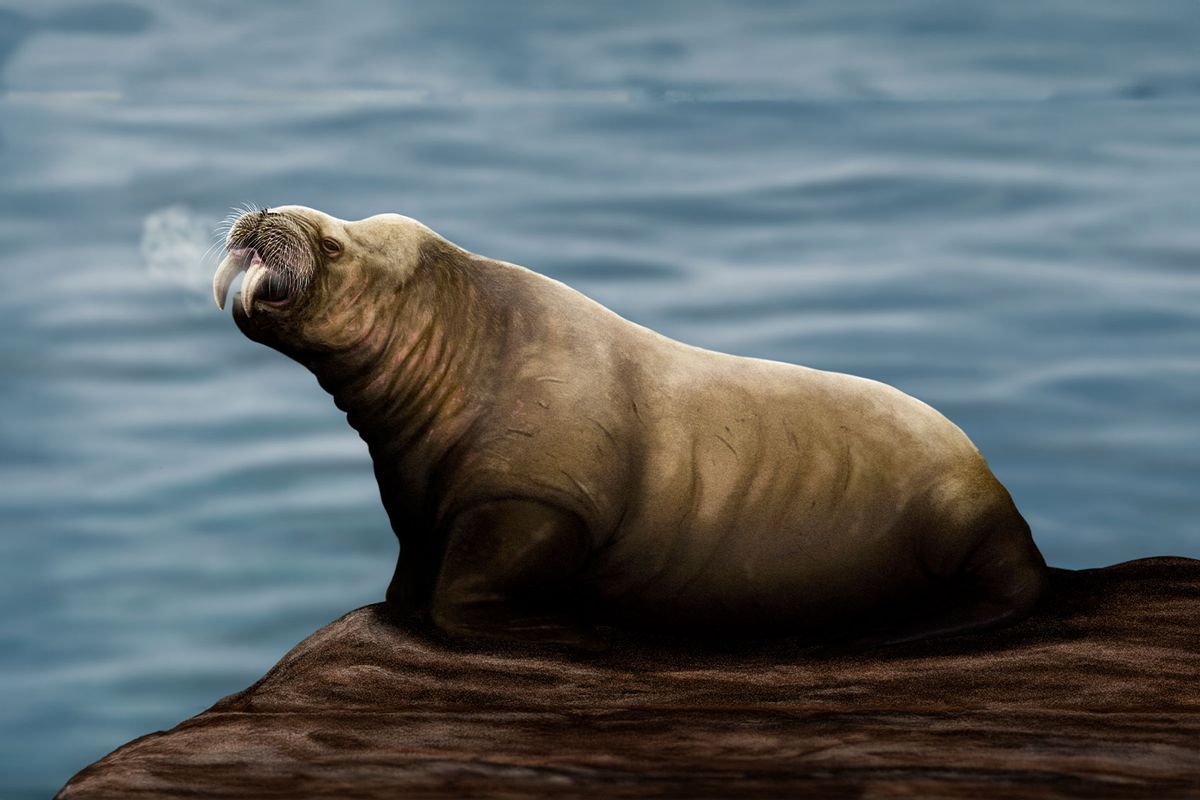Walruses (Odobenus rosmarus) are distinct for their massive, long tusks and fuzzy mustache-like faces, but a recently discovered extinct species looks slightly different from the creature that chilled with Alice in Wonderland. Imagine a walrus-like creature with dentition remarkably similar to modern walruses: A quartet of post-canine teeth, a large lower canine tooth and a short, fused vertical midline on their lower jaw.
It may look like a walrus, but the newly-discovered Ontocetus posti is actually an ancient beast. As reported by paleontologists led by the University of Tsukuba's Dr. Mathieu Boisville in the journal PeerJ Life & Environment, fossils of the primordial pinniped were initially believed to be a different extinct walrus predecessor, Ontocetus emmonsi, after being discovered both in Antwerp, Belgium and Norwich in the United Kingdom. Upon further scientific analysis, however, the researchers determined that the walrus' tooth structure distinguishes it from any previously known extinct species — yet are remarkably similar to surviving walruses. Specifically, "These features include the presence of four post-canine teeth, a larger lower canine, and a fused and short mandibular symphysis," according to a press release.
Though its teeth were different, the ancient walrus evolved separately from O. rosmarus, an example of convergent evolution or when similar traits arise spontaneously in different animals. Dolphins and bats both utilizing echolocation or birds and bugs both having wings are other examples of convergent evolution. Nonetheless, Ontocetus posti probably had a similar suction-feeding form of eating.
The study authors point out that the Odobenus rosmarus is the only surviving walrus species and predominantly inhabit the Arctic, but that this was not always the case for these charismatic animals.
"Their extinct relatives once occupied temperate and subtropical latitudes, mainly in the Miocene eastern North Pacific realm, with a wide range of shape and size, from small sea lion-like ‘imagotariines’ to bizarre unique double-tusked dusignathines," the researchers write.



Shares